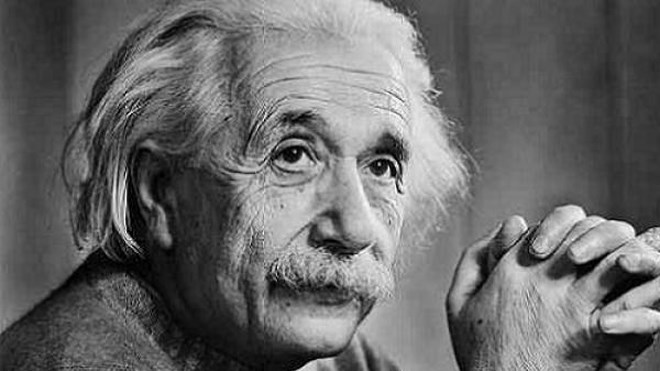It was the most precise measurement in the history of the world, and it was 100 years in the making.
But on Thursday, scientists announced they had confirmed the last major prediction of Albert Einstein's theory of relativity.
Scientists at the LIGO Scientific Collaboration announced they had confirmed the existence of gravitational waves, after measuring the effects of a collision of two black holes, the most dense bodies in the known universe.
“The gravitational waves were detected on Sep. 14, 2015 at 5:51 a.m. Eastern Daylight Time by both of the twin Laser Interferometer Gravitational-wave Observatory (LIGO) detectors, located in Livingston, Louisiana, and Hanford, Washington, USA,” the LIGO group said in a news release Thursday.
“The LIGO Observatories ... discovery, accepted for publication in the journal Physical Review Letters, was made by the LIGO Scientific Collaboration (which includes the GEO Collaboration and the Australian Consortium for Interferometric Gravitational Astronomy) and the Virgo Collaboration using data from the two LIGO detectors.”
According to Einstein, rather than an invisible force, gravity is a displacement of space and time. Chris Jillings, a dark-matter physicist working at SNOLAB in Sudbury, said it's similar to dropping a bowling ball on a trampoline. In this scenario, space is the surface of the trampoline.
"You then flick a marble near the bowling ball,” Jillings said. “The marble will curl under the influence of gravity. But really what's going on is the space is distorted in such a way the marble is just trying to travel in a straight line and because space is curved, it ends up getting bent and travelling around your bowling ball.
"With something as simple as our Earth going around our sun, it's not that there's some gravitational force pulling on the Earth, but the space itself is subtly distorted by the gravitational effect and that causes the Earth to travel in this orbit around the sun."
Under Einstein's theory, Jillings said he predicted that two very heavy objects orbiting one another would create a gravitational wave.
A gravitational wave is a “ripple in the strength of gravity,” Jillings said.
“It is a prediction of Einstein's theory that there would be waves of gravity that could travel through space at the speed of light. And what the wave in fact is is not an increasing or decreasing force ... but it's actually a stretching and a contraction, a distortion of space itself."
Because the wave is so weak, it's incredibly hard to detect and was only possible because of the size of the two colliding black holes and the precision of the laser measuring tool, which bounced a beam off a mirror several times in a four-kilometre tunnel.
"The distortion of space that they measured, they measured a change in length to a part in a thousand billion billion," Jillings said. "Without question, it is the most precise scientific instrument ever made ... Its absolutely fabulous."
While it may not be obvious to non-scientists, Jillings said the existence of gravitational waves is a major leap forward for his colleagues around the world trying to understand how the early universe formed.
"In terms of understanding the universe ... it is absolutely enormous. It is comparable to the discovery of the cosmic microwave background."
Thursday's news was just the latest in a series of scientific achievements to hit the media. In recent years, scientists have confirmed the Higgs-boson particle and have landed on a comet far, far away. Jillings' SNOLAB colleague, Art McDonald, won the 2015 Nobel Prize for his work on neutrinos. And last year, a NASA probe sent back high-resolution pictures of Pluto.
"We took photographs of Pluto! Detailed, high-resolution photos of Pluto,” Jillings said. "We are in a field where in the last 20, 25 years neutrinos, cosmology, astrophysics has taken off in an enormous way and have allowed us to learn a great deal."
There are many reasons why so many scientific boundaries are being breached now, he said. For one, many experiments and projects begun decades ago were well funded and are bearing fruit now. And the equipment scientists use is advancing much more quickly than in the past.
"As people push these experiments, the technology gets better, and things that people have been working on are starting to line up," he said. "All of a sudden in the 1990s, these brilliant satellite experiments started. And we learned a great deal about the early universe."
But the confirmation of gravitational waves may top them all, he said.
"There's a quote -- 'the hardest thing to understand about the universe is that it's understandable,'” he said. “Well, we can make sense of what's going on in the universe.
"So this is a big, big deal. This is one of the most beautiful and complicated and difficult and challenging experiments ever built. I know what I'm putting my 2016 Nobel Prize wager on."
For more information, visit www.ligo.caltech.edu
